25 Evidence-Based Health Benefits of Spirulina
What is Spirulina?
With the surge in eating clean in recent years, it’s no wonder that you’re hearing of new foods as part of this movement.
It’s all about getting rid of processed foods and welcoming natural, healthy, and even holistic foods as part of this clean eating effort.
One such food that has come to the forefront, which continues to gain a great deal of attention, is spirulina.
Eating clean is a way of eating where you are nourishing your body from the inside out.
Rather than eating out of convenience or turning to processed foods, this habit is about consuming foods with a great deal of health benefits.
To succeed in eating clean, you need to go in with an open mind and a willingness to try new foods that you may have never thought of eating.
You are going to find that these foods taste good, benefit your health in a major way, and also fit well into a clean eating regimen.
So let’s get to the heart of what spirulina is, and what makes it such a superior food choice overall.
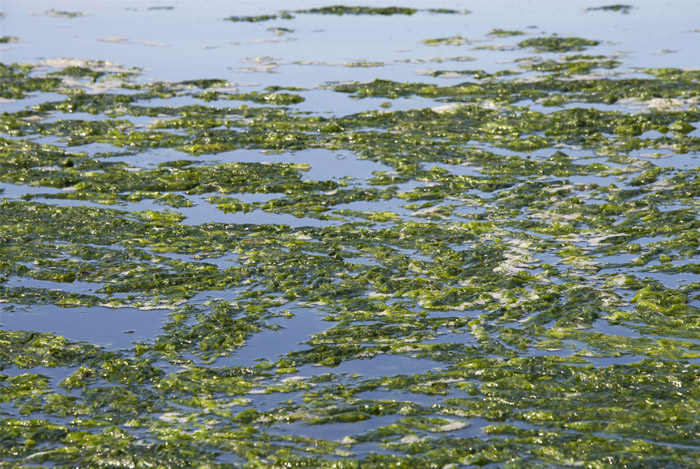
You might be surprised to learn that spirulina is actually the very algae that you might find on the top of a pond.
Yes, it’s that very same algae that you can see and which may turn you off as pond scum, but is actually really good for you in so many ways.
Obviously, when you eat it in the final form of spirulina, it is prepared and safe to eat.
Therefore, the health benefits that come along with it are too amazing to ignore.
Spirulina has a dark blue-green color and is a spiral-shaped type of algae.
It’s very specific in its makeup and this is the reason why this algae, in its final form, is loaded with protein that you can enjoy and benefit from.
It is similar to other sea vegetables such as chlorella or kelp in its nutritional profile.
This type of algae is harvested from lakes in warmer climates such as Africa or South America, but it is also being grown and utilized on a more local basis too.
Though you may not necessarily have thought of algae as a food source, you will see that it can actually taste good when grown and prepared accordingly.
Not only is spirulina an excellent source of protein, but it is believed to have some really wonderful natural healing powers for a number of medical conditions too.

The History Behind It
You might wonder how algae sitting on top of a pond suddenly evolved into a viable food source.
As you can imagine, this didn’t happen overnight; there is a rich and specific history to it.
What was once just pond scum took time to be accepted and enjoyed as food.
This belief grew exponentially once the true health benefits were understood.
Now you see this true superfood being looked to as a protein source and even a way of preventing certain health problems.
Can it really be this beneficial?
You will soon see that the health benefits speak for themselves and that these solutions were derived from the findings of our ancestors.
They knew that spirulina was something good for you, but they just didn’t realize how extensive these findings would end up being.
The history of spirulina, as we know it today, dates back to the fourteenth century with the Aztecs.
Other ethnic groups living in Africa or surrounding regions also found that these specific algae served them well in their diet.
Little did they know that it was packed full of protein, but they recognized that it was satisfying and fulfilling and, therefore, became one of the main staples in their diet.
Throughout history from this time forward, spirulina started to gain momentum in the fact that it could provide fuel and nourishment to certain cultures.
It was the type of food that was behind the scenes, so to speak, though many parts of the world enjoyed spirulina in their diets.
It wasn’t until 1974 that spirulina was actually declared one of the best foods for the future.
This declaration came at the hands of the World Food Conference and, at that time, it was specifically a food considered in helping to fight malnutrition in certain parts of the world.
It would not skyrocket to popularity in the mainstream or in established countries until years later.
Spirulina would also become a main fixture within the diet plans that NASA would use for their astronauts in space.
The algae were provided in a form that suited the spacemen’s needs, but still provided them with nutrition that they needed.
The rest of the world would start to catch on to this superfood once people heard that NASA utilized it for its superior nutritional profile.
From thereon in, the story of spirulina would continue to grow and evolve over time.
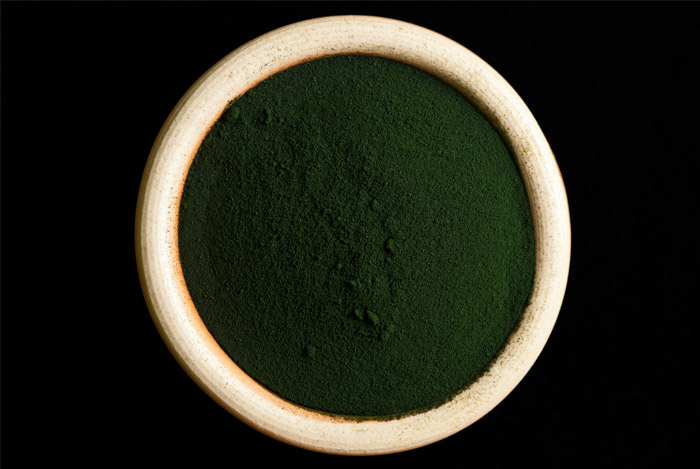
Interesting Facts about Spirulina
You might wonder what gives spirulina its rich dark color.
You may even wonder what caused this pond scum to be accepted as a viable and safe food source.
You may be skeptical and that’s perfectly normal.
Admittedly, until you have tried spirulina in its prepared format, you may be unsure of eating it at all.
Nearly everyone goes through this transition, but if you go in with an open mind, you will soon find that you may actually enjoy spirulina too.
Let’s start with the fact that this superfood is up to 70% protein by weight.
You would be hard pressed to find any other food that is so nutritionally superior.
Not only are you getting a really significant serving of protein, but you are also enjoying a high concentration of vitamins, minerals, and antioxidants.
We’ll get to the specific health benefits later on, but, for now, know that the makeup of spirulina is part of what differentiates it as being unique and outstanding.
Let’s start with the coloring.
Spirulina’s color, more than likely, is unusual to you and can’t be compared to anything else you have seen.
The blue-green deep rich color of spirulina is caused by the presence of a specific pigment called phycocyanin.
It is at the heart of what leads to the health benefits and this pigment alone is specifically responsible for the rich color that you will come to recognize and appreciate.
Spirulina has an extraordinarily high antioxidant count, which may help to fight free radicals that enter the body.
It is the essence of this that causes spirulina to be nutritionally superior for both humans and animals.
Many health experts believe that the presence of the pigment phycocyanin also provides the powers to fight free radicals, also known as toxins, that may enter into the body.
It is extremely noteworthy that understanding the necessity of antioxidants in our food supply and in our health started with foods such as spirulina.
No wonder so many people and cultures have looked to and hailed spirulina for being a true superfood, even before we really recognized what that even meant in the first place!
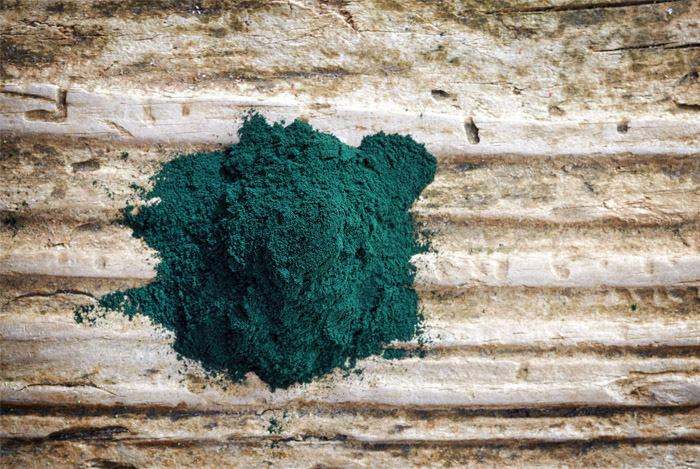
Health Benefits of Spirulina
You hear the term “superfood” used all the time lately, but there are few foods that fit this categorization as perfectly as spirulina.
It’s a nutritious food that also happens to be beneficial to your health in a variety of different ways.
It can be an excellent protein source and it may also give you your daily dose of nutrients—not many foods can say that, but this is what helps to set spirulina apart from all the other superfoods!
The health benefits are impossible to ignore because they are so strong; therefore, it’s important to understand them fully.
This is the type of food that you want to add to your diet each and every day.
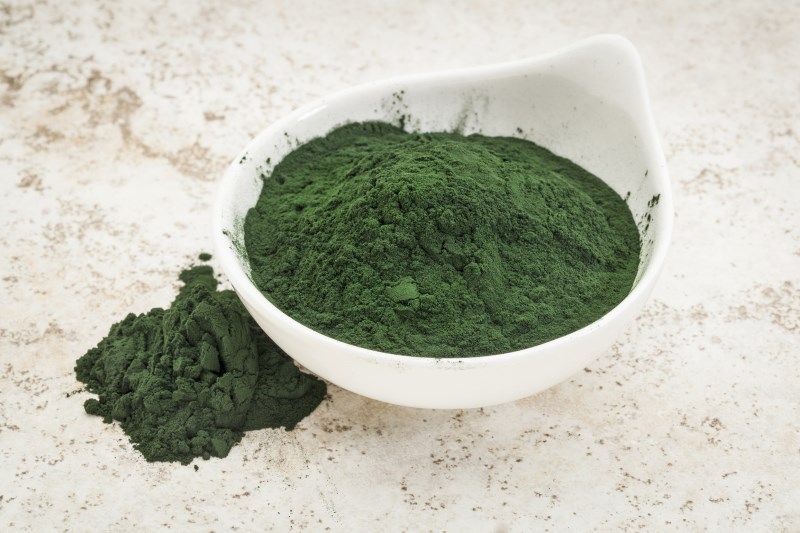
Rich in Protein
Besides the fact that spirulina contains 50%-70% protein by weight, it also contains all of the essential amino acids (1).
While some studies state that a lot of spirulina is needed to satisfy your daily requirements of protein, other studies claim that just two tablespoons are sufficient to substitute protein in a meal (2, 3).
Even though these are highly potent algae, they are not likely to substitute your meal when it comes to protein.
Plus, it is very expensive, costing about 30 times as much as milk or meat per gram (4).
For this reason, it may not be practical to have spirulina as the main protein source.
Instead, try other protein-based sources like whole grains, quinoa, legumes, and nuts.
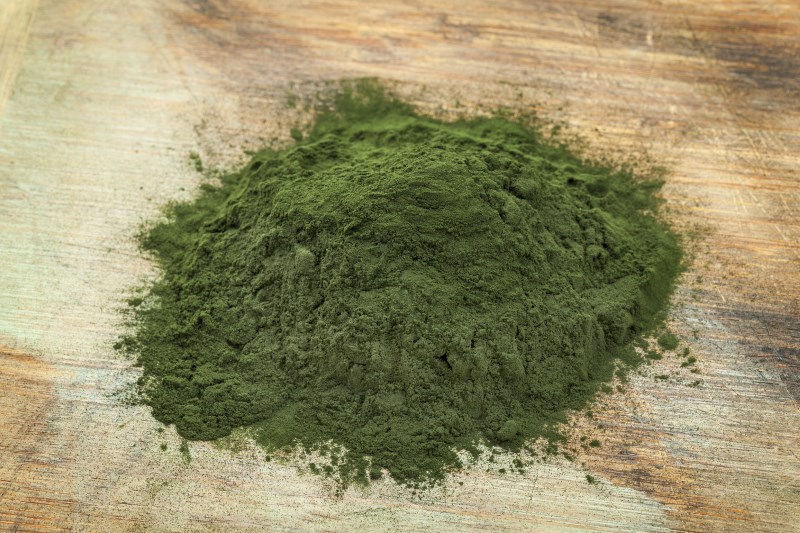
Rich in Vitamins and Minerals
Spirulina, along with dairy and animal products, is one of the best sources of iodine.
Also, it has about the same amount of phosphorous, magnesium, and calcium as milk (5).
In addition, it is a good source of vitamin K, potassium, and pantothenic acid (B5), as well as thiamin (B1), riboflavin (B2), niacin (B3), copper, iron, and manganese (6).
You can clearly see spirulina is a good source of B vitamins, but what makes spirulina exceptional is the B12 vitamin found in it.
Deficiency in B12 can lead to disturbed vision, depression, and declining mental abilities.
Moreover, spirulina should not be taken as a sole source of B12 because some studies suggest our bodies are not capable of absorbing this particular form of B12.
As a substitute, try salmon, dairy and meat products, eggs, or fortified cereals.
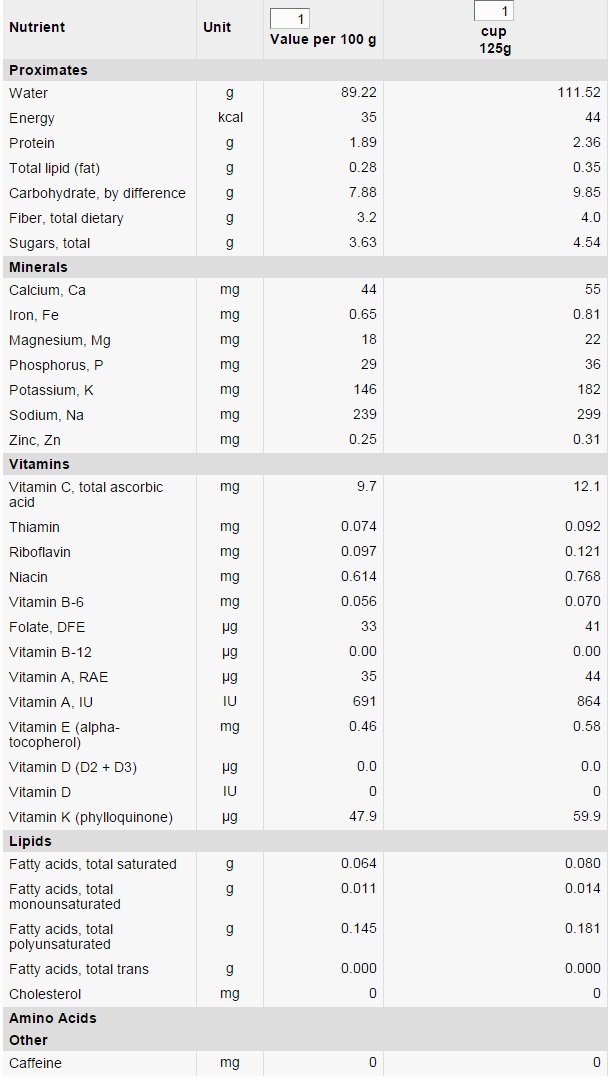
Antidote to Poisoning
According to one study, spirulina is capable of treating arsenic poisoning (8).
Because high concentrations of arsenic are consumed by drinking water worldwide, Bangladeshi researchers conducted a three-month study.
34 patients suffering from chronic arsenic poisoning were given spirulina, whereas 17 patients received placebos.
Results show that spirulina mixed with zinc twice daily for 16 weeks caused a substantial improvement in symptoms.
This proves that spirulina is a powerful detoxifier, which is owing to high levels of chlorophyll and its ability to remove toxins from the blood and improve bowel and liver function.
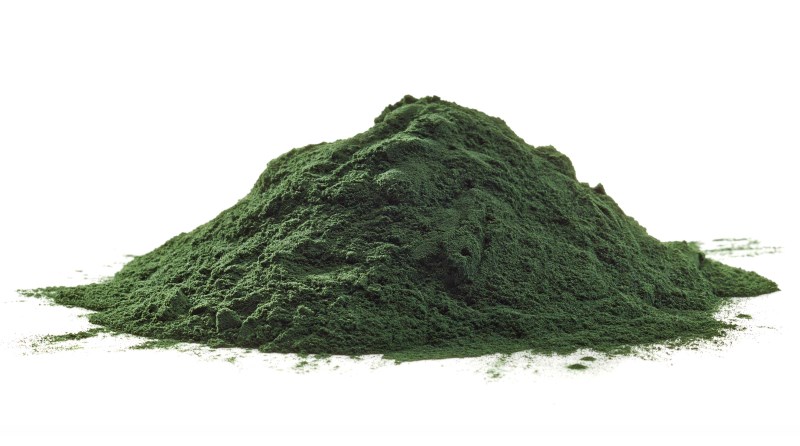
Fights Allergies
Millions of people are having problems and irritations from allergies to dust mites, pet dander, pollen, and many more.
If you are having symptoms like stuffy nose, watery eyes, or itchy throat, there is no doubt you are suffering from one of those irritants.
Animal studies suggest that spirulina stops the release of histamine, which is responsible for symptoms of allergic rhinitis (9).
According to human studies, spirulina consumption improved symptoms like sneezing, nasal congestion, nasal itching, and nasal discharge when compared to the placebo group (10).
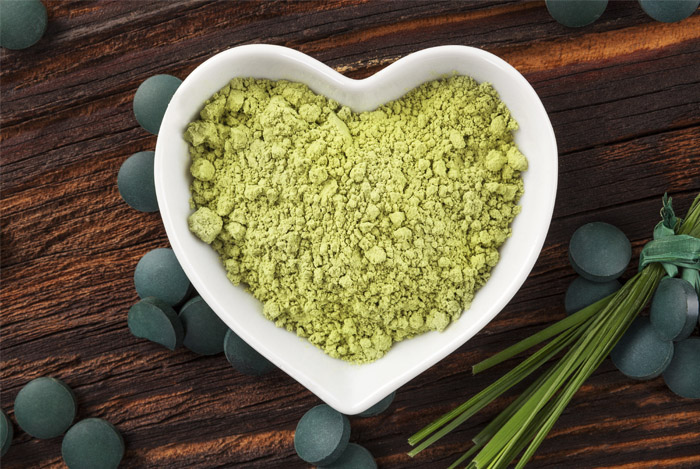
Regulates Blood Pressure
One way of keeping your high blood pressure under control is through healthy dieting, exercise, and lifestyle.
Another way is consuming superfoods such as spirulina.
According to a Mexican study, both men and women who were taking 4.5g of spirulina daily reduced the rates of high blood pressure in just six weeks without any dietary changes (11).
Of course, eating algae while consuming high amounts of unhealthy food will not make any difference.
What you actually need is a balanced diet and regular exercise.
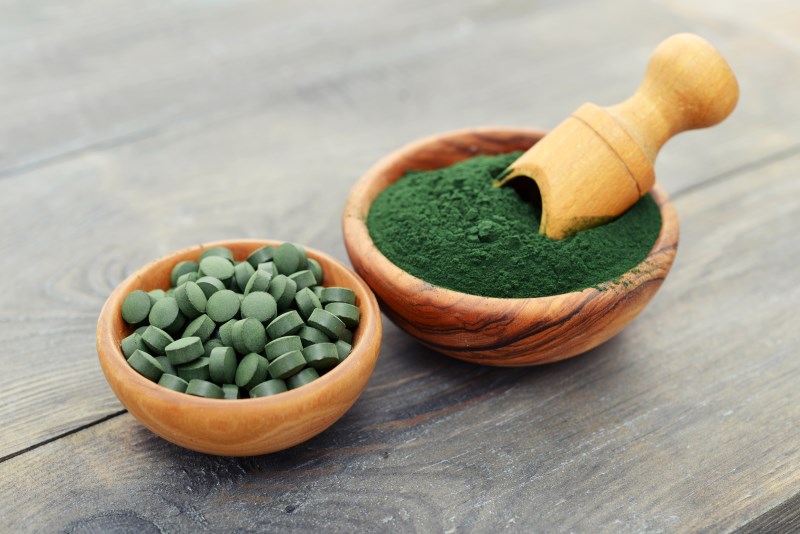
Manages Cholesterol
Just like in the case of blood pressure, cholesterol can be regulated with a balanced diet and regular exercise.
It is also important to balance the “good” and the “bad” cholesterol to prevent a heart attack or stroke.
One of the most conventional ways of lowering your cholesterol is taking medications.
However, with medications come side effects.
On the other hand, instead of taking medications, you might want to try out nutritional supplements among which is spirulina.
In a study conducted on elderly patients, lower cholesterol levels have been associated with the consumption of 8 grams of spirulina a day for 16 weeks (12).
In another study, spirulina has proven to be beneficial in preventing atherosclerosis (a hardening of the arteries caused by high cholesterol levels) and decreasing risk rates for cardiovascular diseases.
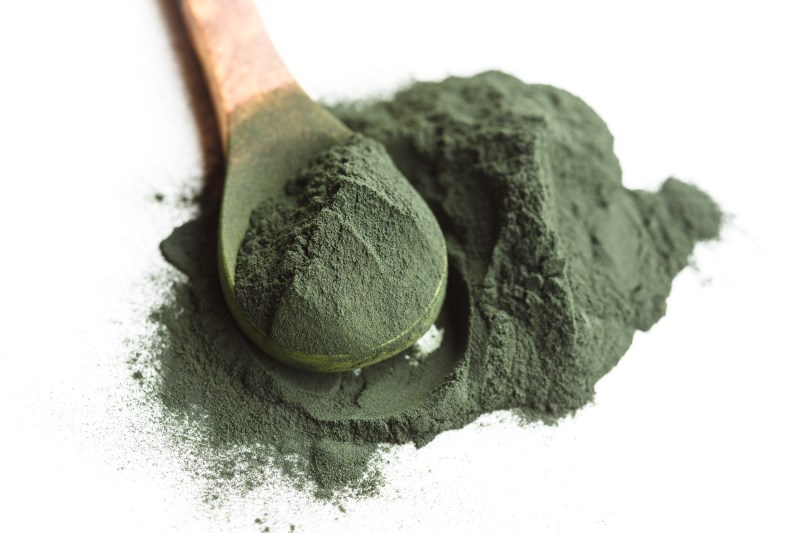
Helps With Cancer, Especially Oral
As of today, cancer has become one of the leading causes of death and many studies related to spirulina’s effect on cancer have been conducted.
In one study, people who chewed tobacco and took spirulina had reduced precancerous lesions compared to the placebo group (13).
One research in test animals shows that spirulina prevents tumor and cancer occurrence (14, 15).
Studies show that spirulina is effective in fighting oral cancer.
87 people from India with precancerous lesions were taking one gram of spirulina per day for one year.
As a result, 45% of them had a complete regression of lesions in a month, whereas only 7% in the control group were displaying regression (16).
When they stopped taking spirulina, lesions occurred and developed once again the following year.
In yet another study, 40 people with precancerous lesions were taking one gram of spirulina per day, which led to significant improvements in symptoms when compared to the drug Pentoxifylline (17).
According to a different study, spirulina has been associated with inhibiting pancreatic cancer growth (18).
Nevertheless, it is yet to be researched and proved that spirulina has positive effects on cancer.
You can also prevent cancer by eating plenty of organic fruits and vegetables rich in antioxidants and cutting out sugars, simple carbs, and processed foods (19).
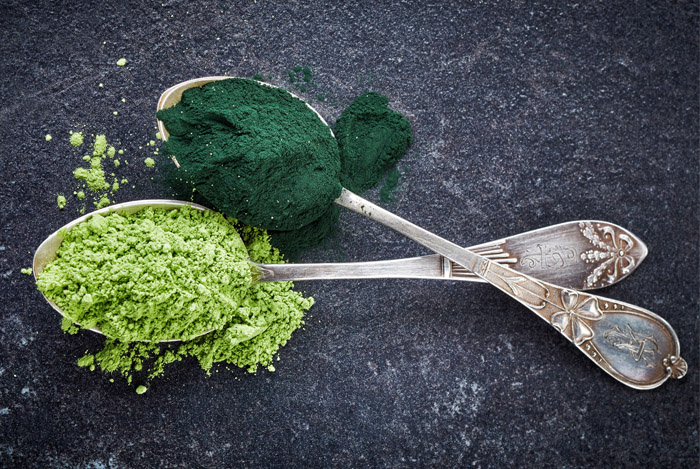
Boosts Immunity
If you are having health problems by catching a cold here and there, spirulina might help you.
It has been found that spirulina can enhance immune system function and prevent the development of viral infections (20).
Furthermore, studies conducted on senior citizens and animals show that spirulina boosts immunity (21, 22).
Due to its potent nutrients such as polysaccharides, spirulina is capable of boosting immunity.
Another nutrient in spirulina, phycocyanin, is the bright blue antioxidant that increases the number of white blood cells in the body.
It is well known that white blood cells play an important role in your immune system because they produce antibodies that protect your body from foreign invaders and bacteria.
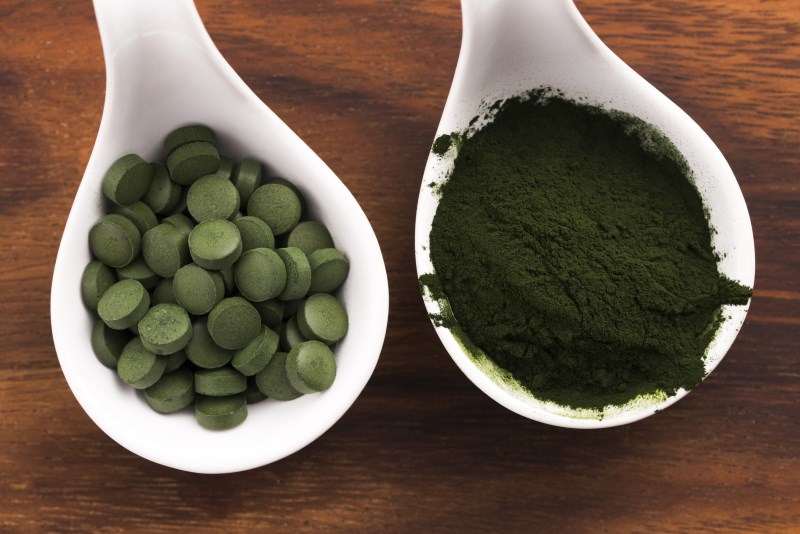
Improves Memory and Academic Performance
Studies suggest that spirulina actually improves both cognitive ability and mental health.
In a study conducted on 549 school children, who were daily taking two grams of spirulina for two months, showed improvement in academic performance by 10% (23).
Even though it is not certain that spirulina is the cause for improved performance, this could still be possible due to L-tryptophan – an amino acid found in spirulina, which is a precursor to the neurotransmitter serotonin.
Spirulina has also proven to prevent memory loss by reducing oxidative damage (24).

Protects the Brain
Taking spirulina may also protect the brain from degenerative diseases like Alzheimer’s and Parkinson’s (25).
A study compares spirulina with antioxidant foods like spinach and blueberry, which cause neuroprotective effects due to their ability to reduce inflammation and eliminate free radicals (26).
Also, spirulina will not only protect your brain from degeneration, but also sharpen your mind and focus.
Some findings suggest that taking spirulina daily will induce productivity and ability to work through something like ADHD (27).
Furthermore, neurodegenerative disorders are responsible for ischemia and aging.
In a study conducted on mice, it has been concluded that feeding them with spinach, blueberry, or spirulina has effects in the focal ischemic brain (28).
After four weeks of the trial period, all animals were given chloral hydrate.
As a result, the animals treated with blueberry, spinach, or spirulina were reported to have reduced ischemia/reperfusion-induced apoptosis and cerebral infraction.
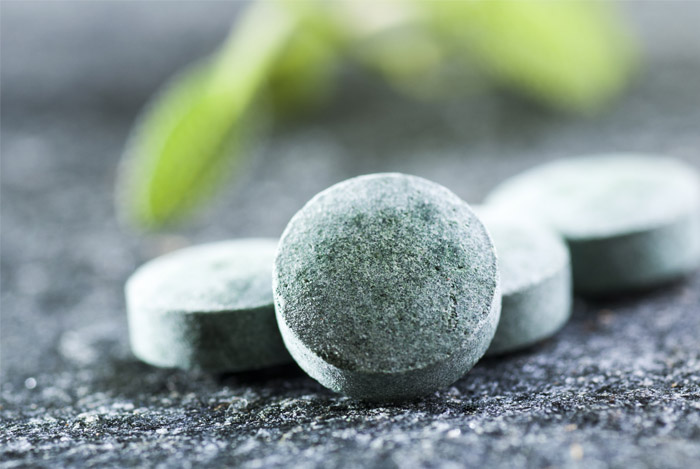
Powerful Antioxidants
If your body is exposed to oxidative properties, this can harm your DNA and cells, which further leads to chronic inflammation, cancer, and other diseases (29).
Being very rich in antioxidants, spirulina is capable of protecting your body from oxidative damage.

Anti-Inflammatory Properties
Phycocyanin is the main active component of spirulina and gives it the unique blue-green color.
Phycocyanin has the ability to eliminate free radicals and prevent the production of inflammatory molecules, thus providing impressive anti-inflammatory and antioxidant effects (30, 31, 32).
Protects LDL Cholesterol from Becoming Oxidized
Today, heart disease is the leading death cause (33).
Many termed risk factors have been linked to an increased danger of heart disease.
Spirulina has been associated with bringing about beneficial effects to these factors: lowering total cholesterol, LDL cholesterol, and triglycerides, while raising HDL-cholesterol (the “good” cholesterol).
One study had 25 people with type 2 diabetes given two grams of spirulina per day.
The results showed a significant improvement in the previously mentioned markers (34).
In another study, people with high cholesterol who were taking one gram of spirulina per day were reported to have lowered triglycerides by 16.3% and LDL by 10.1% (35).
Several other studies confirm the finds listed by the two studies mentioned, but recommend higher doses of 4.5-8 grams of spirulina per day (36, 37).
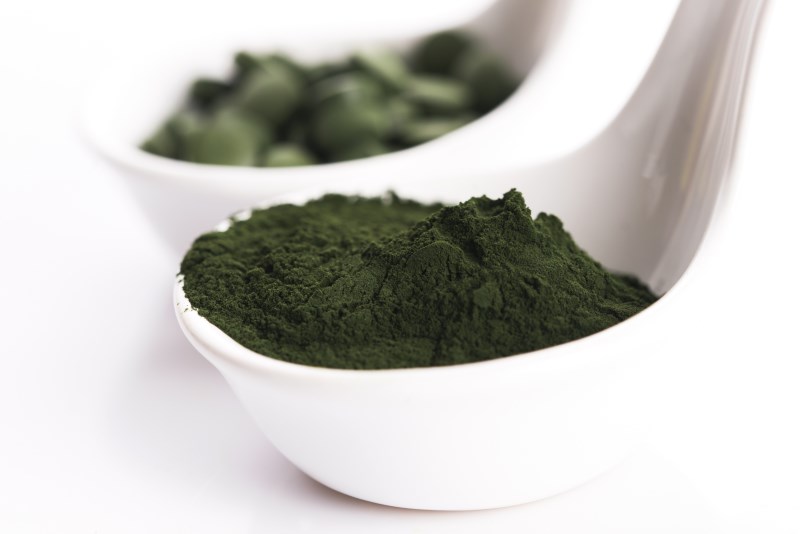
Effective Against Anemia
There are many forms of anemia.
However, the most common one is characterized as follows: a condition in which there is a deficiency of red cells or of hemoglobin in the blood, causing weariness.
This condition is fairly common for the elderly and causes relentless fatigue and weakness (38).
In a study conducted on 40 elderly people previously or currently suffering from anemia, it was proven that spirulina supplementation improved and increased the hemoglobin content of red blood cells. Immune function was also improved (39).
Nevertheless, more research has to be conducted to back up these findings before any recommendations can be made.
Improves Muscle Strength and Endurance
A major contributor to muscle fatigue is exercise-induced oxidative damage.
To prevent this, you may turn to certain plant foods that have strong antioxidant properties and, therefore, prevent muscle fatigue, or, at least, help you minimize the damage.
In addition to this, spirulina proved to be beneficial when it comes to muscle strength and endurance, thus improving your athletic capabilities.
Two studies suggest that spirulina is capable of enhancing endurance, thus reducing the chances of injuries and increasing the time it takes for you to become fatigued (40, 41).
In yet another study conducted on college athletes, spirulina supplementation has been linked with increased muscle strength, but did not improve endurance at the same time.
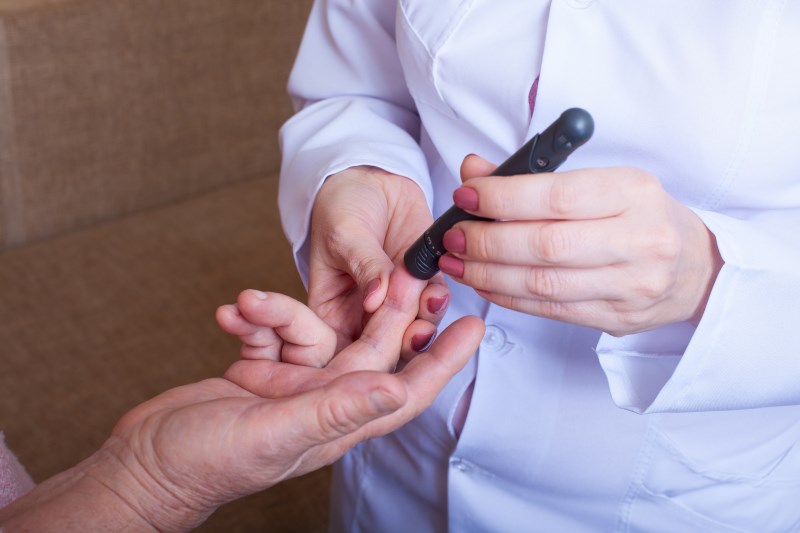
Helps with Regulating Sugar Levels
Some animal studies suggest that spirulina lowers blood sugar to a great extent.
In some cases, results show that spirulina has outperformed some of the most popular diabetes drugs, including Metformin (42, 43, 44).
According to some evidence, spirulina can be effective not only on animals but humans as well.
One study had 25 patients with type 2 diabetes take two grams of spirulina per day for two months, which significantly reduced their blood sugar levels (45).
HbA1c, the most important marker when it comes to long-term blood sugar levels, was reduced from 9% to 8%.
Even though it was reduced by 1%, this rate is substantial in this marker.
The 1% change was associated with the decreased risk of diabetes-related death by 21% (46).
Nevertheless, you should not make premature conclusions due to the fact that the study was small and lasted for two months.
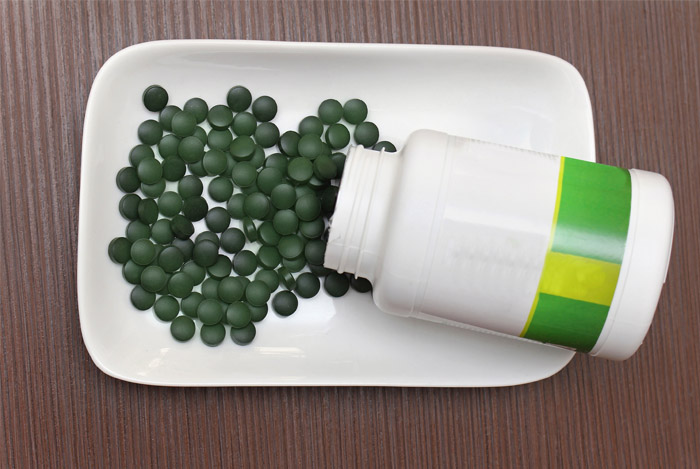
Helps Fight Liver Diseases
Spirulina, aside from its many benefits, can also be very helpful for people with chronic liver disease.
Some evidence suggests that spirulina protects those with chronic liver disease against liver damage, liver cirrhosis, and liver failure.
In a study published in the Journal Nutrition, researchers came up with the conclusion that spirulina may be beneficial to liver health.
Spirulina was reported to function as an antioxidant, chelate harmful metals, eliminate cell-damaging free radicals, and prevent liver damage caused by a well-known liver toxin tetrachloride.
One more study concluded that spirulina is beneficial for NAFLD patients.
15 Cretan patients were treated with large spirulina doses of six grams per day.
The patients were reported to experience substantially positive results with the cholesterol levels dropping by 30%, whereas levels of lipoprotein cholesterol and hemoglobin increased drastically (48).

Helps with Weight Loss
Due to the high amounts of protein that spirulina contains, eating this potent plant can satisfy you and your hunger.
It is also high in fiber, which is a prerequisite for a balanced appetite.
In the case of the regular consumption of spirulina, you may notice weight loss in the long-term (49, 50).
However, make sure that you incorporate a consistent and balanced diet into your weight loss program and mix it with exercise.
A healthy lifestyle is a prerequisite for your weight loss efforts, which will eventually speed up your metabolism and improve your results (51,52).

Fights PMS Symptoms
According to some experts, spirulina has some benefits in fighting the symptoms of PMS.
Some of these symptoms are fatigue, cramps, bloating, and, particularly, mood swings.
Even though it is still unknown whether spirulina can or cannot help with depression or anxiety, PMS symptoms can be controlled and alleviated with some dietary supplements such as spirulina.
Besides the fact that you will be in a position to alleviate these symptoms, you may also eliminate them by taking spirulina on a regular basis (53).
Once undergoing therapy of using spirulina on a regular basis, you may notice the changes and realize that the symptoms may be either minimized or completely gotten rid of.
Eliminates Candida
Candida species belong to the fungal microbiota and can be found in the mucosa oral cavity, gastrointestinal tract, and vagina (54).
Even though it may sound as something harmful, it is not.
However, if your microflora is not healthy and balanced, your body will be much more susceptible to various diseases and sicknesses.
As a result, the microfloral imbalance can lead to leaky gut syndrome and candidiasis, which is the leading cause of mycosis-related deaths in the US (57).
Once again, an unhealthy diet rich in sugar and artificial ingredients causes lower antimicrobial resistance, thus a significant rise in infections.
However, spirulina can help with the problem as several animal studies have proven it to be an effective anti-microbial agent, for candida in particular (58, 59, 60).
Moreover, spirulina has been reported to promote the growth of healthy bacterial flora in the intestines, which inhibits Candida from thriving.

Helps Manage HIV/AIDS
As of today, many epidemiologists have been wondering why HIV/AIDS rates are relatively low in Japan, Korea, and Chad.
According to one study, the possible explanation may be the amount of algae that people in these areas consume.
The study took 11 HIV patients who have not been taking antiretrovirals before the research.
The participants were split into three groups.
The first group was given 5g of brown seaweed per day, the second group was given 5g of spirulina, and the third group was given a combination of both (61).
After three months, when the trial period was complete, the study had the findings that the seaweed varieties and the combination had no adverse effects on the patients.
CD4 cells responsible for fighting infection remained stable.
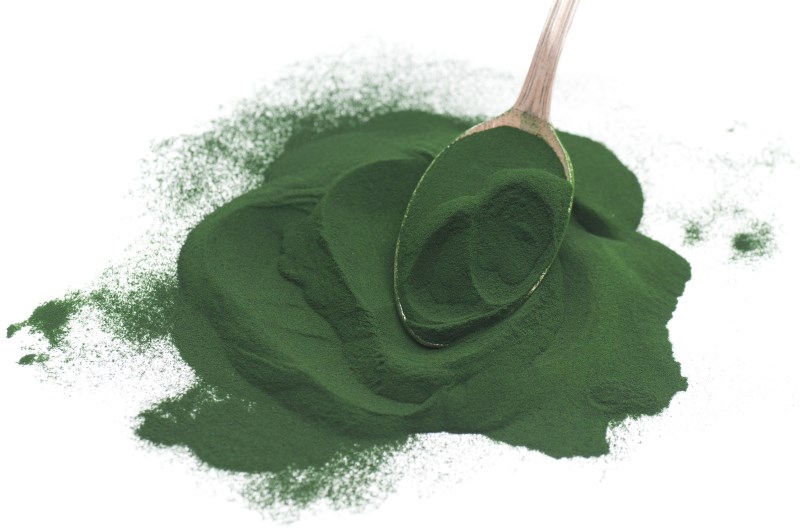
Keeps Skin Healthy
Due to its potent nutrients, like all eight essential amino acids, it goes without saying that spirulina will make your skin look fabulous, glowing, and healthy.
Free radicals are present everywhere and are responsible for your skin deterioration.
In order to keep these free radicals away from your skin, incorporating spirulina into your diet will eliminate all the toxins from your skin.
This will also increase skin metabolism, meaning you will boost your skin’s cell recovery and healing, which will keep your skin glow.
To sum up, spirulina is capable of keeping your skin hydrated, detoxicated, and glowing all the time.
Furthermore, this potent plant has anti-inflammatory properties that will prevent skin tumors.
Many people, especially those exposed to UVR, are susceptible to skin tumor development.
In a study conducted on mice, results showed that those rodents which were given spirulina exerted anti-tumor effects against UVB irradiation in the skin through the plant’s anti-inflammatory and antioxidant effects (62).
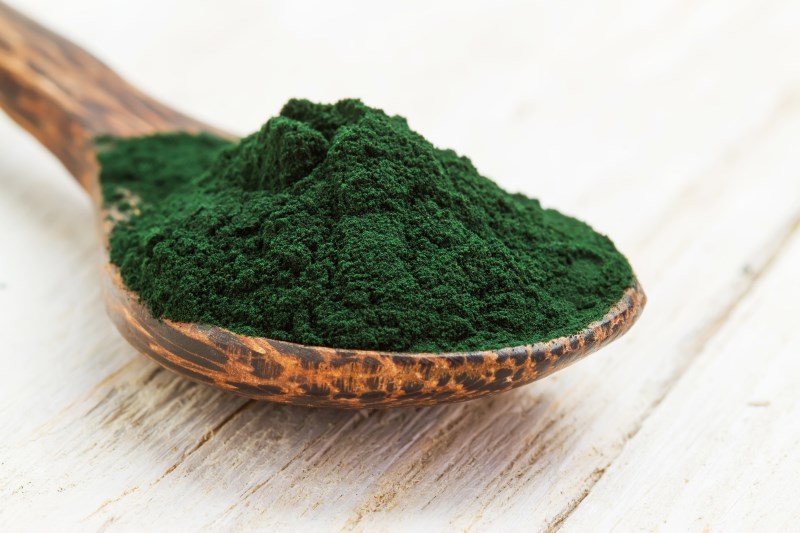
May Treat Hepatitis C
As we have already mentioned, spirulina is an effective means when it comes to treating various liver diseases.
However, not many plants can be helpful for hepatitis C, which is one of the gravest liver diseases.
Hepatitis C is a viral infection that induces the inflammation of the liver and can cause liver failure if not detected in its early phase (63).
Spirulina possesses immune and antibacterial stimulating properties, which can help with treating the ailment.
A clinical study was conducted on 66 people who were diagnosed with hepatitis C.
30 of them were treated with the spirulina supplement, whereas the rest were treated with Silymarin.
According to the results, the group that was treated with spirulina was reported to experience a significant improvement in alanine aminotransferase, CLDQ, and ASEX scores, compared to the Silymarin group (64, 65, 66, 67).
Preserves Bone Health
Spirulina, due to the high amounts of calcium that are found in it, is known to be good for bones.
Some claim that it can even be used as a substitute for dairy products, or milk, to be precise.
In one study, spirulina was examined on whether it has positive effects on bone metabolism in estrogen-deficient rats.
The dosage used in the study was approximately equal to the recommended amount in healthy foods for humans.
The results showed that spirulina intake increased bone mineral density (68).
Reduces Radiation Sickness
After the Chernobyl disaster took place, many people in the surrounding areas became susceptible to radiation poisoning from eating foods grown on the radioactive soil.
An increasing number of people were suffering from this illness.
The symptoms were bone damage and immunodeficiency.
They were also suffering from anemia and allergic reactions.
As you may notice, all of these are the symptoms that spirulina can treat.
When children were given five grams of spirulina per day, it caused dramatic recoveries within six weeks.
The children were reported to experience a significant reduction of the micronucleus frequencies caused by radiation (69).
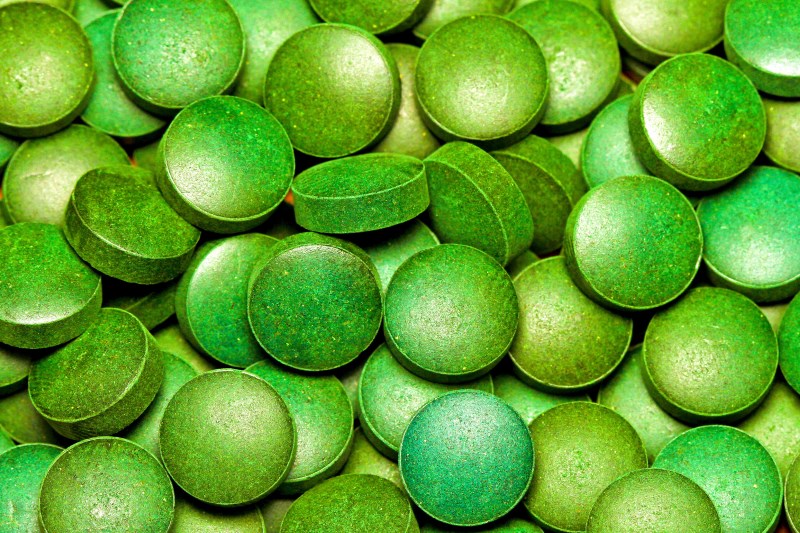
How to Take Spirulina
Now you see just how beneficial spirulina is to your health.
You understand that this amazing protein source is helping to provide nutrients and other important elements to many diets.
Though it may be expensive and fit outside the mold of what is traditional in terms of food, the reality is that it’s difficult to ignore just how beneficial spirulina could be in your life.
You may not necessarily replace other protein sources altogether, but you should want to integrate these algae into your diet as an essential supplement.
Knowing all of this, you want to be certain that you take spirulina in the best way possible.
Understanding the dosage and the way that you should utilize it each day will help you get the most out of it.
Don’t try to guess, for this is an area where doing your homework will really pay off tremendously in the end.
The best way to start taking spirulina is to mix it into things.
This is due to a couple of reasons and it all begins with taste.
Spirulina may be an amazing superfood, but you are not, necessarily, going to grow to love the taste of it.
Therefore, mixing it into smoothies, adding it to soups or dips, like hummus, can be a wonderful way to get used to it.
You will ensure you get the right amount each day, but won’t have to suffer through the pungent taste of it.
Another thing to consider in terms of getting used to spirulina is that it can be fairly expensive.
It’s a worthwhile investment into your health without a doubt, but can also cost you far more than other protein sources or even dietary supplements.
Therefore, you want to be realistic with how much spirulina you take in a week, knowing that the cost can be rather expensive.
You will hear a lot of different theories around the terms of dosage.
Some sources may say that you have to take very high doses of spirulina to get any positive effects, but this simply isn’t true.
You may benefit from 1-2 teaspoons per day, which is easy enough to mix into your favorite healthy dishes.
Always be aware that, as with any other dietary supplement, you must be certain that you are healthy and, therefore, able to take it.
Though spirulina may offer some tremendous health benefits, it can introduce potential unknown risks to pregnant women.
Furthermore, it is not for those who are allergic to seafood because it has many of the same properties.
Go in knowing this, but be open-minded to the fact that spirulina may be well worth the cost and effort of getting used to the taste—the benefits far outweigh any drawbacks.
Just know how to take it properly and you’ll come to really enjoy it.
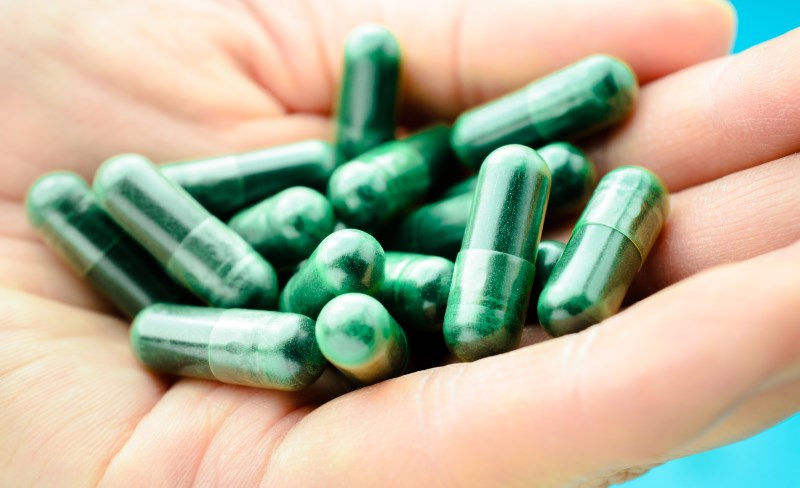
How to Choose the Best Brand
There comes a time when being an educated consumer really pays off and that time is now!
You really want to do your homework now, because there are plenty of companies that want to get onto the spirulina bandwagon.
Though there are a growing number of products out there that offer spirulina as a part of them, they may only offer a small portion of it.
Therefore, such products fall short in terms of the benefits that they may offer.
The first tip in trying to find the right brand of spirulina is to go with a pure product and not a blend.
If a product says that it “features” or “includes” spirulina, then don’t buy it. You don’t want a blend that has a ton of fillers along with the effective supplement.
You want straight spirulina; hence you want to be sure that you are getting something that is centered only around this.
You also want to be sure that you go for an organic brand as well.
This ensures proper standards were followed and adhered to, and that it is of the highest quality possible.
If the product comes from Japan, organic or not, then this is not the best choice in brand.
The reason for this is that since it is algae, spirulina can absorb heavy metals from the waters that it grows in.
It has been found that if spirulina comes from areas around Japan, then the potential lead content could be far too damaging.
Here are the brands that I’ve tried and they are pretty good.
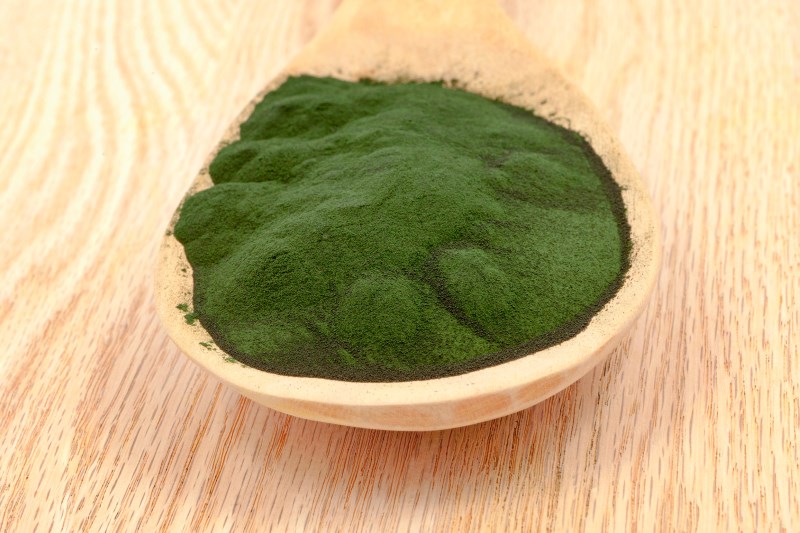
Precautions and Issues to Be Aware of
As with anything, you can have too much of a good thing and that also holds true for spirulina.
Though you may enjoy adding it to your diet and be open to the many health benefits it offers, you also don’t want to overdo it.
Taking the proper dosage, which really is centered around 1-2 teaspoons per day, is recommended.
Going over that may cause upset stomach or have adverse effects, which, of course, is never ideal.
As mentioned before, you want to be very careful about where the spirulina comes to you from.
In research, it was found that this type of algae in particular can absorb the materials that it grows within.
If it grows in certain waters, then this may mean that the spirulina can get contaminated with these potentially toxic substances.
Much of the research has pointed to the biggest problem areas being from waters in and around Japan and China.
Some of the potentially toxic substances may include lead, which can cause long-term damage to both children and adults.
Know where your spirulina is coming from and go for something outside of these identified problem areas.
Also be sure that it’s a natural product because if you go with a blend, you may never be sure of what else is included within.
Always opting for organic can also ensure that you get the highest-quality product.
Be sure of what you are getting with this or any other natural product where the health standards aren’t necessarily in place to mandate the quality that you think you’re getting.
Take your time when you begin taking spirulina because you should want to see how your body will react.
If you have a seafood allergy, you’d want to avoid these algae as it can cause an allergic reaction.
If you have other health problems, make sure that spirulina is safe for you to take.
For most people, this high protein superfood can be an excellent supplement, but just be sure that you don’t have any potential complications that may interfere with its effectiveness.
Gradually increase your spirulina intake in small quantities and be sure that it doesn’t cause an upset stomach.
In the end, you may find that you enjoy it and the health benefits so much that it’s well worth it.
Go in with an open mind and willingness to give your body time to adjust to it and see if it works well for you!
Conclusion
You might feel skeptical that just one food supplement can offer so many benefits, but the facts speak for themselves.
You might feel unsure about spirulina due to it being pond scum or algae, but it’s worth opening yourself up to.
There’s a reason that spirulina has grown in popularity and risen to superfood status and it deserves every one of these labels for all the wonderful attributes that it possesses.
The thing to remember is that spirulina should come from the right source and that it should be pure, natural, and organic.
You want to be certain that you are getting the highest quality product so that you reap the most rewards.
If you look at its history, you will see that this is not a new protein source or newly accepted food; therefore, there must be some wonderful merit in what our ancestors saw.
Even if you turn to spirulina for protein alone, it’s going to help you in ways that you never imagined.
Spirulina will, undoubtedly, continue to gain momentum and become part of our mainstream food supply.
Though you may not love the taste of it, you will find that it’s easy enough to mix into your favorite dishes or smoothies.
You can enjoy it before or after a workout or make it a part of your meals each day.
Be consistent with taking it, as this will ensure that you get everything that you want out of it.
No matter what your reasons for taking spirulina are, go in with an open mind and a readiness to embrace this superfood for all that it can be.
Spirulina may benefit your health now and for years to come, so enjoy all that this superfood has to offer.
Now you see just how many potential health benefits it can have, so even if it helps you in one area it’s well worth it.
This is yet another aspect of clean and healthy living that may help you be your best.
So start to embrace spirulina in your everyday life and see how much better you feel in the process!
FDA Compliance
The information on this website has not been evaluated by the Food & Drug Administration or any other medical body. We do not aim to diagnose, treat, cure or prevent any illness or disease. Information is shared for educational purposes only. You must consult your doctor before acting on any content on this website, especially if you are pregnant, nursing, taking medication, or have a medical condition.
HOW WOULD YOU RATE THIS ARTICLE?
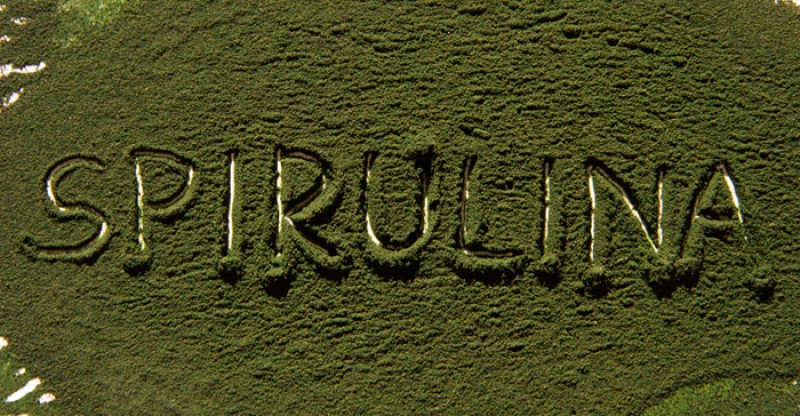





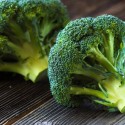
had no clue spirulina quality depends on where it comes from. thanks for this info
You are welcome!
Location and how it was grown plays crucial role for your decision to buy a certain brand. Do your homework before buying.
Great information. However just a side note.
Any brand you buy where the Spirulina comes from the United States can not be ORGANIC as you recommened. The US does not allow Spirulina to be Organic because it is grown in the water they assume you can not control.
Also just because a brand is from Japan does not make it a bad product. In fact, some of the superior sources of Spirulina come from GMP certified facilities in Japan. Also if you buy Organic, it is highly likely it is a Japanese source.
Hi Jason, we have worked with Spirulina for 34 years… we mentored with the father of Spirulina Dr. Christopher Hills (look him up on Wikipedia)…. Spirulina grown in the US can be organic and US Spirulina is probably the best choice these days… a few years ago the FDA changed the regulations to make earth and aqua organic standards the same… the organic, natural fertilizer used for years in cultivating Spirulina, because it had a high sodium content and would not be useful in soil based on the sodium level was eliminated from the organic standards… in the water, spirulina does not absorb the sodium…. some companies changed & in order to retain their organic status began using substances such as animal blood in the growing medium….. introducing the possibility of pathogens into the growing medium. I believe this is why so much that is sold as organic has a terrible smell and people report that is does not have the same nutritional punch. Our particular Spirulina is grown in triple filtered water insuring a level of safety not found in products that are grown in the wild. Much of the Spirulina not listed as organic REALLY IS ORGANIC and ours is one of them! Brand names that are reliable are New Phoenix Rising, Earthrise, Nutrex. At New Phoenix Rising we offer a money back guarantee that ours is the best tasting and most nutritious available. We have 20% or more of the blue pigment Phycocyanin in each jar we offer which is proving to be the most potent of any known pigment. Most Spirulina’s on the market have 5-12%. The crop we offer grows in 110-130* insuring the most potent nutrients available. We advertise ours as “Better than Organic”.
In terms of what comes from Japan, they are dealing with an incredible radiation issue and so we do not recommend any products that come directly from there whether that is Spirulina, tea or another product. Hawaii is becoming questionable also now with the radiation issue. Seventy percent…. 70% of what is offered on the US market (even when listed as organic) is from China. Not only does it have the potential for heavy metal contamination but it is also irradiated prior to coming here. rendering it a “dead food”. Our scientist tells us the radioactivity can be measured coming from the product. We would invite you to tune into one of our weekly conference calls held on Monday evenings at 7:00 pm WCT. It is a 30 minute informational call on health/BioLumina Spirulina and the number to call on is: 831-244-6624.
I’m eating Moringa and I guess it’s similar to Spirulina. Gotta try this one out too.
Hi Sarah,
Try it out. Let me know if it had better effect on you comparing to Moringa!
Heard alot of good things about it,decided to read up and it sounds like a superfood,bought some organic powder today,so tomorrow will be my first day.
It is a super food. Try cooking some recipes and please let me know your experience. I have to warn you, though, that the smell might not be the most pleasant. So try cooking it with some strong fruity ingredients to mask natural taste and smell of spirulina.
I have been using spirulina for about 3 months now. I LOVE it. This by far has been the best article I have read on the topic and I have read quite a few. Thank you!
Thank you very much Natalie! 🙂
Would you recommend the powder rather than a capsule?
I feel that I would be more comfortable taking a pill. Would that be as effective?
I bought Now brand tablets. I’ve been taking half dosage and I think it’s causing me major headaches and constipation. I’m afraid to take more.
Hi Cathy,
You should consult your doctor if you are experiencing such effects.
This sounds like a cleanse reaction… NOW brand comes from China & is not a reliable source of this amazing super food.
Do you get the same results with capsules?
Hi Suzanne,
I take capsules and they seem fine.
Thank you for the great info! 2 questions.
1) Can I just add the powder to a glass of water and drink that?
2) Does spirulina have any positive effects on a person’s hair? (i.e. Prevent hair loss/boost hair growth?)
Thank you!
yes you can simply mix it with water and drink it. others mix it with smoothies. i have read some users’ claim that it stopped or helped with their hair loss but once they stop using..in about a week, the hair fall comes back.
hai , I have a small query, my relative suffering from intestine problem , doctor found heal in intestine layer. Will this spirulina be helpful for this wound and heal?
Spirulina is a great immunity booster and very good for cell regeneration, which would mean it acts good for healing damaged cells. But as in your case it is an inside the body problem I suggest to consult a doctor first regarding the intake of spiruliina.
I’ve been taking spirulina pills for 6 months! But I noticed red spots on my hand! What could be the reason? Spirulina?
Hi Derek,
You should consult your doctor about this.
Hi,
Can we suggest Spirulina to the person with High BP, High Sugar Level, Hypo Thyroid and Uric Acid. This person is a living dispensary and needs something to get back to his life. Is there any harm suggesting the person Spirulina?
Thanks.
Hi Heli,
If you are concerned, you should always consult your doctor.
Hi, Thank you for your very long article! However, I think you should consider editing out the pictures that are not spirulina. Spirulina does not grow in “whatever pond” — it requires specific care and conditions to grow. Because it is microscopic, the water it grow in looks green. You cannot actually see it. Makes it harder to put a picture, but on our website (we have a spirulina farm) you can see several, and see videos.
Again, thanks. I just have to correct people when they make it sound like pond scum. It is very far from it!
Spirulina Viva Mexico
Thanks, Katie!
I’ll research this.
Thank you for the AWESOME article! I bought the NOW Certified Organic Spirulina 500 mg per tablet bottle. How many mg do you suggest or that would be equivalent to 1 to 2 teaspoons daily. NOW serving size is 6 tablets daily which is 3,000 mg. Thank you!
Hi Yvette,
I personally take 2,000 mg per day.
I read on Wikipedia that it can cause liver damage I am a bit scary now I use Spirulina on and off over 30 years. Did you ever does seen a case?
I wouldn’t trust Wikipedia a lot. Everybody can write whatever they want there and admins do not make sure that those statements are supported by research.
P.S . I always have been very happy to use it knowing the benefits. And a lot of people think I don’t look my age I think it is the benefit of Spirulina 🙂
Thanks for sharing, Nazile!
great article. I have started using the powder, as I have am anaemic and having muscle pains.
I take spirulina and instantly feel calm and focused. Im not sure what my body is lacking but Spirulina is providing it to me. Provides a sense of well-being for me